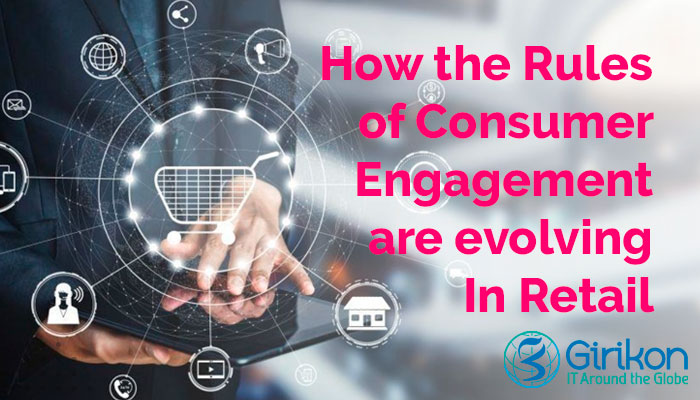Our Blogs
At the peak of COVID-19, merchants were making decisions in haste to provide the products and services that customers needed. Today, when the world is far more at ease, these makeshift solutions are now intensifying as shoppers have a plethora of options driving expectations to an all new high. Additionally, their patience is very limited now. In fact, research data across over 2000 retailers suggests that 80% of shoppers are very likely to abandon them after three bad experiences.
Merchants need deeper the insights into customer behaviour to scale up their business. Here are top 4 trends that have been observed across the world on how the retail landscape is changing.

Trend 1: Shopping journeys get more complex
During the 2 years of COVID, three types of digital channels grew their transaction share by almost 40%: brand websites, retailer websites and apps, and online marketplaces. This of course includes transactions through their apps as well. In the process, associated channels like delivery apps, social media, and messaging platforms have also become prominent players in the digital commerce eco system, with a growth of over 20%.
As the range of shopping channels continues to expand, shopping journeys have got more and more complex. The purchasing journey has become fragmented and complex. It is imperative for brands and merchants to develop a one-on-one relationship with customers across platforms namely social media, messaging platforms, and video to stay relevant.
Social media, influencers, and messaging apps have become hugely popular today for product discovery. For making a purchase, social media, digital wallets and email are the leading digital destinations. And when buyers need customer support, they mostly turn to chatbots and social media.
Trend 2: The store goes digital
Although transactions through brick-and-mortar stores decreased significantly during the pandemic, the physical store still plays an important role in the shopping journey. In fact, reports indicate that over 80% of the global merchandise sales happened at physical stores in 2020. The primary reasons shoppers prefer to visit a physical store are firstly, to touch and feel the product, secondly one gets immediate delivery of the merchandise and finally to avoid logistics costs.
However, shoppers today are blurring the lines between digital and physical channels while they are in the store. Many shoppers today research about a product on the retailer’s app while still being in the sore before making a purchase. To compliment this trend, brands and retailers are connecting the in-store experience with an increasing number of digital touchpoints.
The role of the store associate is growing as well. At the peak of COVID, store associates evolved from the routine scanning and bagging to becoming customer service reps, product recommenders, and brand influencers. And these roles are more than likely to stay, which makes the role of the store associate in the customer journey far more intriguing.
Trend 3: The loyalty game has gone a few notches up
Loyalty programs are continuously evolving based on shopper expectations. Although a points-based loyalty program is still the most preferred method today, data indicates that younger generations are seeking a more experience-based journey that establishes a deeper connection with the brand. Millennials today value exclusive access to limited products and richer experiences far more than ever when it comes to loyalty programs.
Shoppers are also seeking rewards for their transactions. They are willing to take a further step such as downloading an app or writing an online review and sharing personal information like their birthday or phone number for a more personalized experience and loyalty benefits.
Trend 4: Brands and Retailers and brands fast track unified shopping experiences
Most customers expect brands and retailers to recognise their unique needs and expectations, but only a portion of them have the capability to turn data into personalized offerings in real time across channels and touchpoints.
To address this customer expectation, and to address the challenges associated with delivering that expectation, retailers and brands are adopting a threefold approach:
HIRING MORE DATA SCIENTISTS
Retailers are actively working to hire more data scientists. And this trend is expected to grow further into 2023. This trend that brands and retailers have the opportunity to overhaul their loyalty programs to meet the rising customer expectations and their openness to share personal data.
ADOPTING A UNIFIED ENGAGEMENT PLATFORM
Many retailers and brands today are already in the planning stage for such a platform, which allows them to access and monetise customer data by engaging with them at a deeper level.
UPGRADING POINT-OF-SALE TECHNOLOGY
Going forward, the pint of sale (POS) will become a critical part of a unified customer engagement platform. In fact, new retailers are already adopting this approach and are moving to a cloud solution.
The in-store digital experience is key for engaging with customers and driving sales. Here are some tips on now to enhance customer experience.
Empower associates with the tools that drive sales
As we mentioned before, store associates are adopting extended functional roles such as customer service, ecommerce, and social media experts to engage with shoppers. To be able to wear multiple hats successfully, store associates need access to customer data along with user friendly digital tools. This is where a CRM platform like Salesforce comes into play. Associates can access complete customer profile with information on purchase history, buying preferences, demographic data, customer satisfaction score, and more.
To get associates up to speed quickly, Salesforce provides digital learning platforms like myTrailhead that bring associates up to speed on how to handle every aspect of digital and physical transactions. Brands and retailers can reskill associates for routine store tasks such as picking, sorting, packing, and shipping to support the fulfilment journey. Store managers can learn to use digital tools to analyze data, access insights and act on them faster than ever.
Maintain real time inventory levels
The greatest enemy of customer satisfaction is out-of-stock inventory. Most shoppers are interested in pre-ordering new or out-of-stock items. This is especially true for fast moving items. Stores can manage inventory levels with a flexible and robust order management system. The order management system connects data across your warehouses and stores to give associates the most accurate status of current inventory. That translates to happy customers.
Offer multiple digital payment options
Customers need more payment options, period. Having just a credit card machine won’t do. In the era of digital, stores need payment types that are minimally invasive and streamline checkout for customers.
Level up store fulfilment
During the peak of the pandemic, there was a scramble to buy online or pick up in store. In fact, some retailers even turned some of their stores to micro-fulfilment centers.
Make sure to:
- Clearly communicate important details to customers, such as where to pick up their items from and when.
- Clearly communicate to customers what identification they need to provide to pick up their orders
- Establish a seamless connect with customer service channels so that shoppers can easily chat with an agent to resolve any issues
- Offer personalized product recommendations to customers based on their purchase
- Augment customer service across channels with a personal touch
Customers love the physical experience, personal touch and immediacy that is intrinsic to in-store shopping. It will be wise extend that experience to your customer service channels. And one of the best ways to achieve this is to train associates by having them help out customer service agents during peak season.
Another important consideration is to encourage self-service for customers. Keep your help centre up to date for customers to find their way around. Integrate workflows that guide customers through tasks like how to initiate a return to a nearby store. Use AI-powered chatbots to scale support during sales or holiday seasons.
Lastly, adopt asynchronous modes of communication like messaging apps. They keep the conversation going and provide a history of past interactions. Train associates and empower them to resolve customer issues over digital channels and incorporate customer feedback to evolve the experience. Develop a loyal customer base, especially in the era of vibrant social media.
Girikon is a Gold Certified Salesforce Consultant and can help you set up a strategy to connect with your customers like never before.

 +1-480-382-1320
+1-480-382-1320 +61-1300-332-888
+61-1300-332-888 +91 9811400594
+91 9811400594






